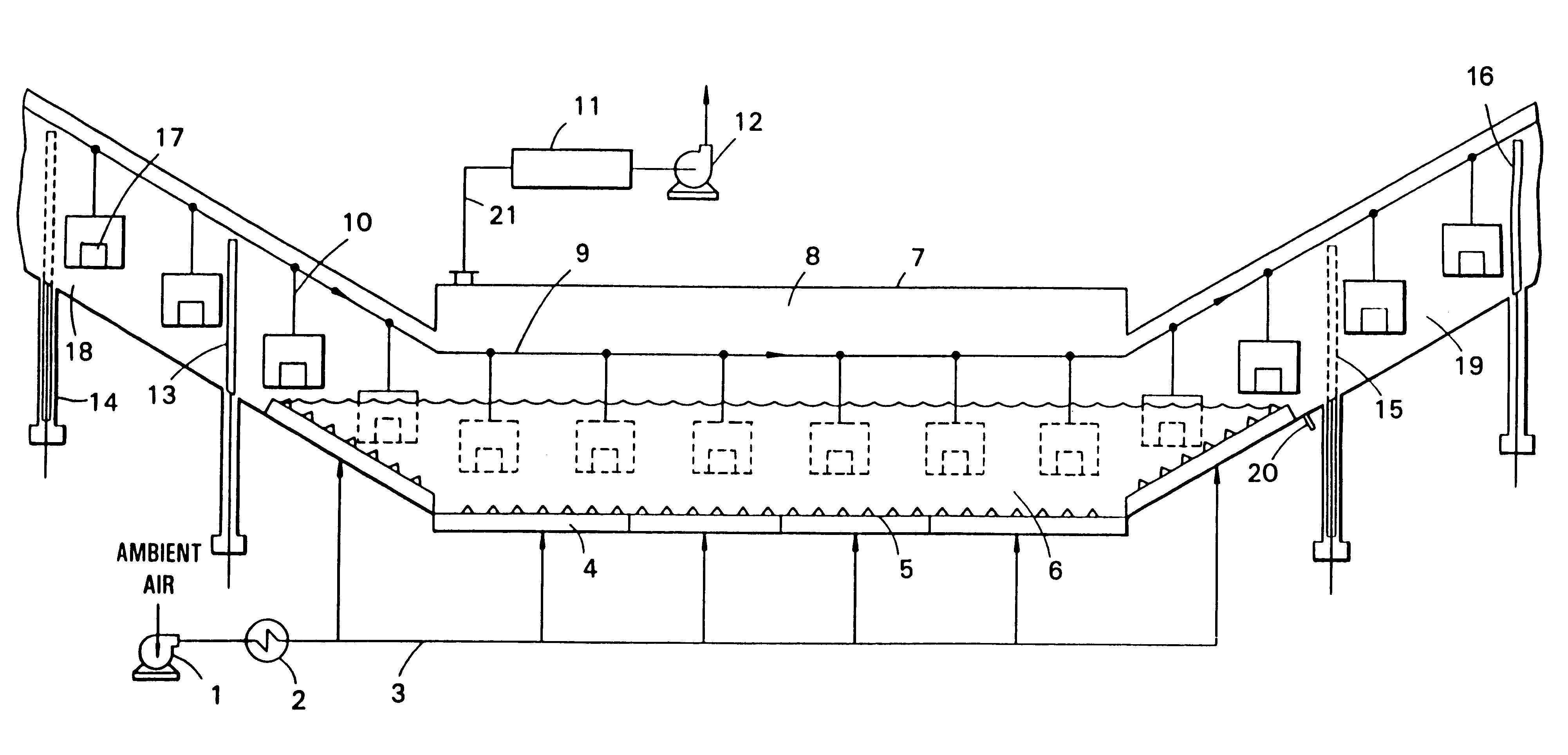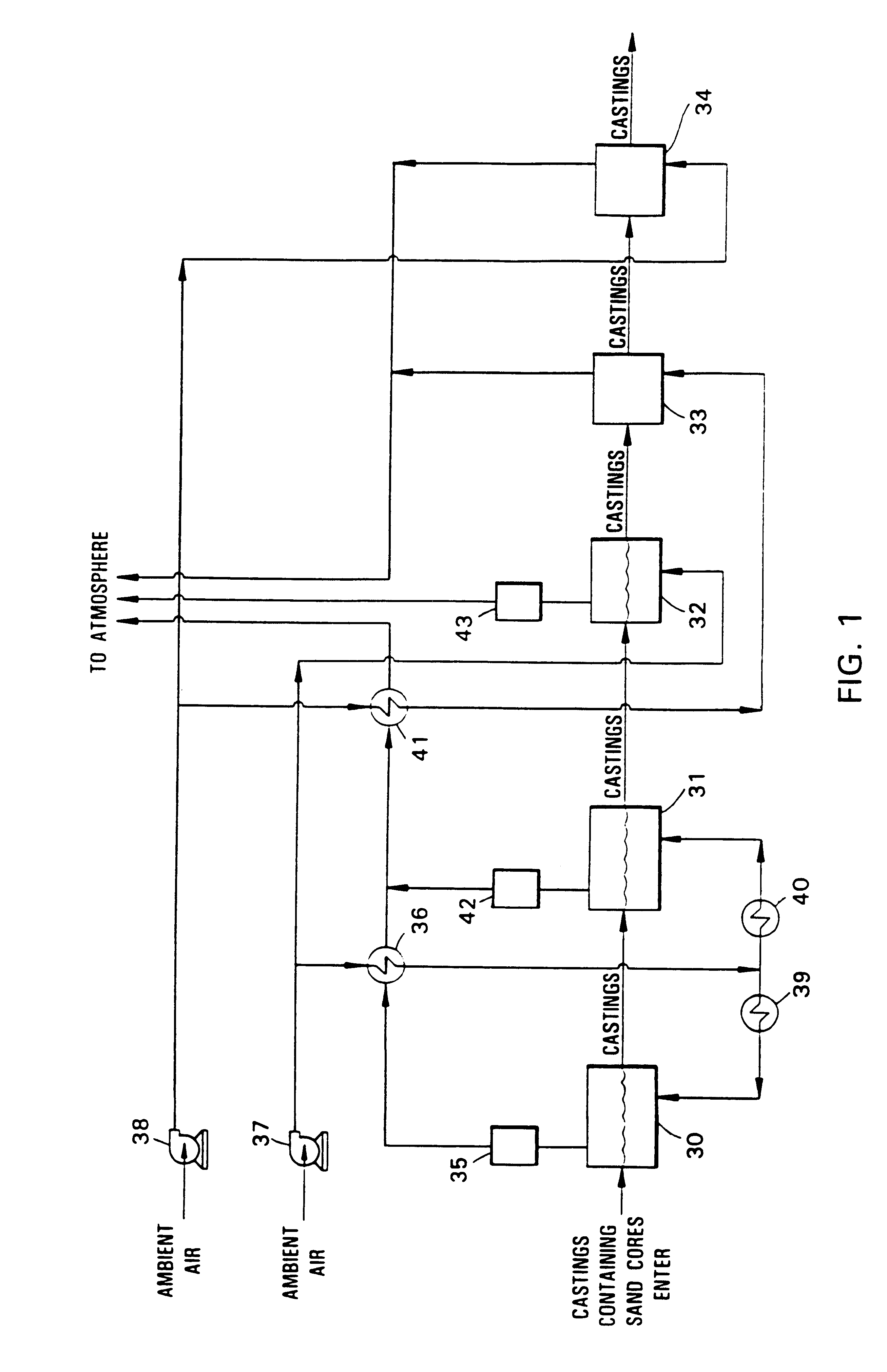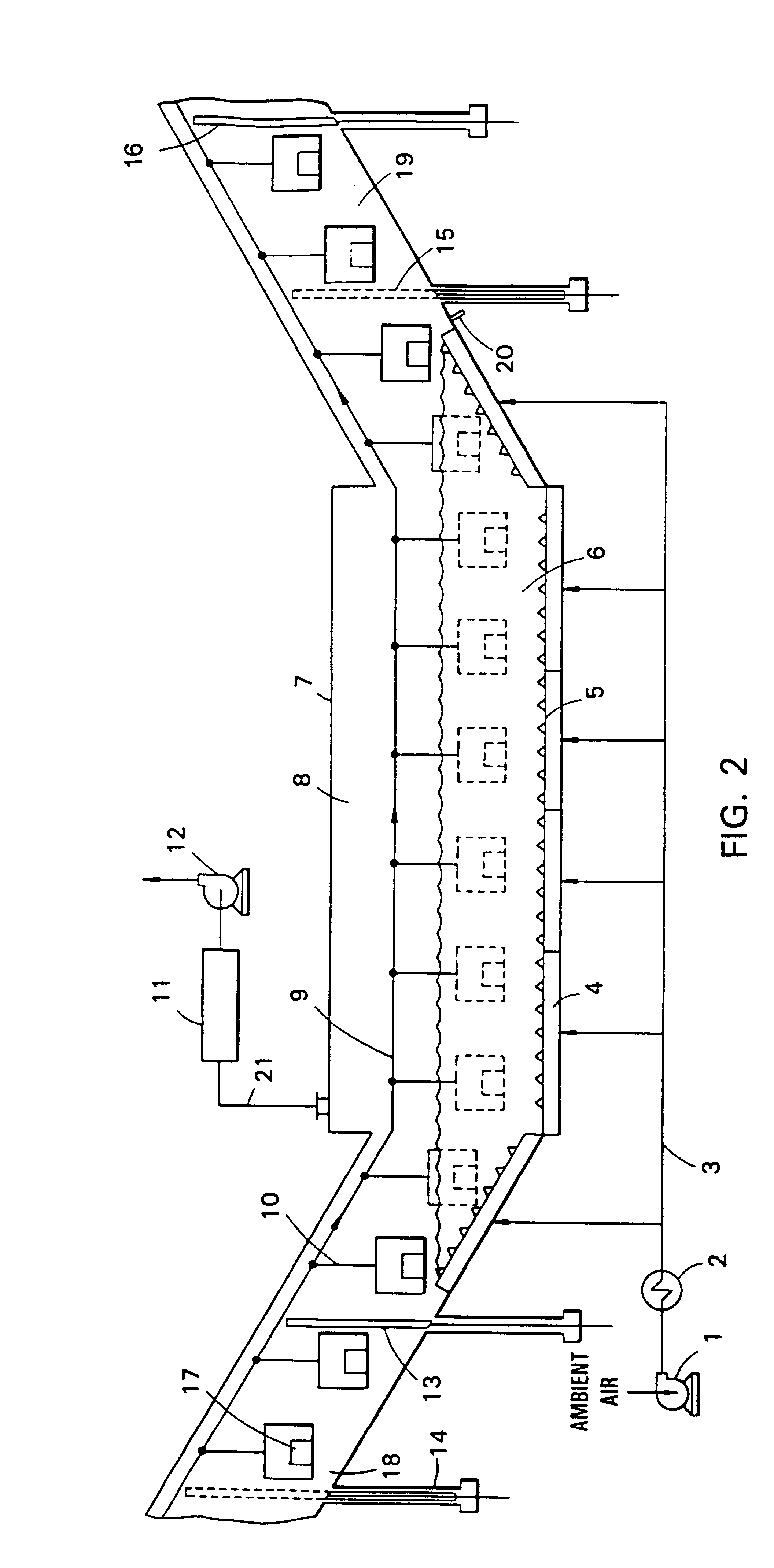Apparatus and method for sand core debonding and heat treating metal castings
a technology of metal castings and sand cores, which is applied in the field of apparatus and methods for sand core debonding and heat treating metal castings, can solve the problems of difficult to remove sand cores, difficult to heat treat metal castings, and softer materials of aluminum
- Summary
- Abstract
- Description
- Claims
- Application Information
AI Technical Summary
Problems solved by technology
Method used
Image
Examples
example
Parts:
Aluminum castings / Engine blocks 5500 Kg / hr.
Sand Core Debonding Conditions:
Temperature: 500.degree. C.
Residence Time: 90 minutes
Environment:
Fluidized Solids / Foundry Sand
Heat Treating Conditions:
Temperature: 500.degree. C.
Residence Time: 5 hrs.
This was total time including the 90 minutes of sand core debonding. Both operations were conducted in the same furnace in series.
Quench:
Rapid quench to 200.degree. C. in a fluidized solids bed of foundry sand. Fluidized solids cooled using water cooling coils.
Aging:
3 hrs. at 230.degree. C. in fluidized bed aging furnace
Ambient Air Cooling to 60.degree. C.
Heat Treating Results:
PUM
| Property | Measurement | Unit |
|---|---|---|
| temperature | aaaaa | aaaaa |
| operating temperature | aaaaa | aaaaa |
| operating temperature | aaaaa | aaaaa |
Abstract
Description
Claims
Application Information
 Login to View More
Login to View More - R&D
- Intellectual Property
- Life Sciences
- Materials
- Tech Scout
- Unparalleled Data Quality
- Higher Quality Content
- 60% Fewer Hallucinations
Browse by: Latest US Patents, China's latest patents, Technical Efficacy Thesaurus, Application Domain, Technology Topic, Popular Technical Reports.
© 2025 PatSnap. All rights reserved.Legal|Privacy policy|Modern Slavery Act Transparency Statement|Sitemap|About US| Contact US: help@patsnap.com



